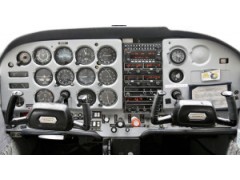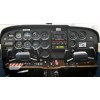Flying with full access to ATC services is like driving in the HOV lane with a police escort. As a Private Pilot you are allowed to ask for ATC services and they are only provided if the controller work load allows. As an instrument pilot they are required to provide you services and you are allowed to fly additional more direct routes.
The Instrument rating requires that the pilot has 50 hours of cross country experience (flying places 50 nm away) and 40 hours of instrument training. You can combine these two requirements together a little bit. If you have a Private Pilot’s license and start flying places, you should build up 35 hours of cross-country experience pretty fast. Then you are ready to enroll in instrument training. It will be easy to get the last 15 hours of destination flying while working on instrument skills.
Being able to fly sole reference to the instruments does not give you permission to do things that are reckless like fly into icing conditions or through a thunderstorms, but it is certainly helpful with our Pacific Northwest Marine layers. Instead, instrument flying makes flying standardized, which makes traveling to Reno feel the same as flying to Paris. You track courses until you join and approach and find the runway. There is little intimidation flying to new places and you have a team of air traffic controllers supporting you.
There is no better way to make your flying safe than training for an instrument rating.






